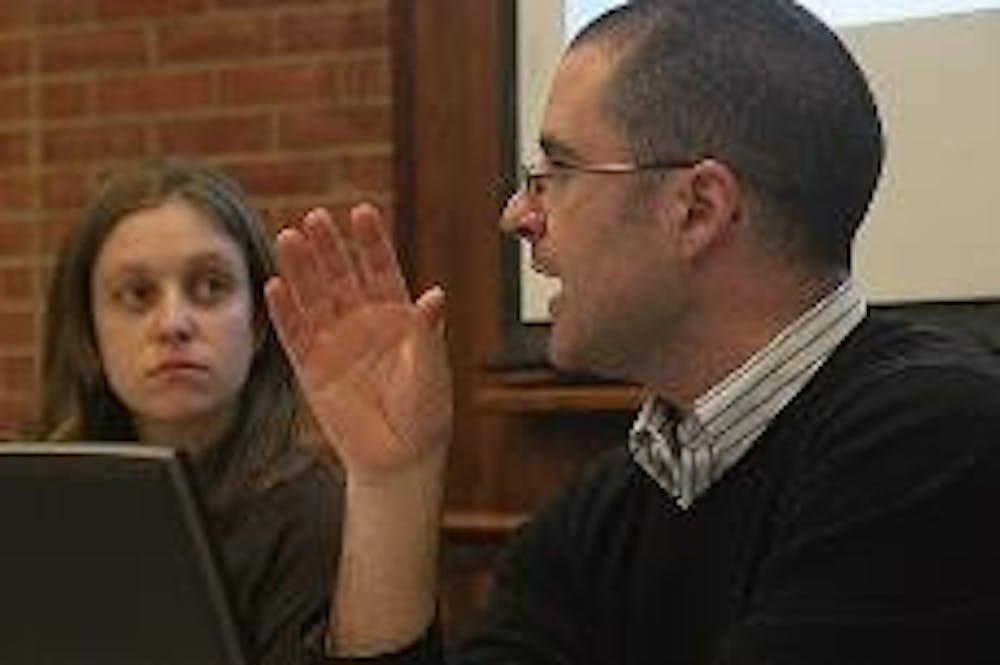The key to responsible building is not lessening the negative impact, but making sure people and the environment benefit from the project, said Simon Nicholson, an instructor in the School of International Service who is on the building committee for the school's new building, during a panel discussion Thursday.
Panelists discussed how energy efficiency, water savings, selection of materials, sustainable development and social justice fit into green building designs.
"We need to do the right thing while fostering and creating joy," he said.
The new building, currently under construction in the area between the current SIS building and Bender Library, looks very much like other buildings on campus but is different in many ways. The new building will reflect SIS' goal to promote peace through the support of non-violence, he said.
In the United States, buildings use 35 percent of the nation's energy, 40 percent of the nation's materials and 25 percent of the nation's waste, said Nicholson.
"This is an environmental imperative," he said. "We've got to do things right on our campuses before we send people out in the world."
In traditional environmental design, the best way to save the environment is to limit use of resources. But people shouldn't have to give something up to be environmentally responsible, Nicholson said.
In the past, designers made products from "cradle to grave" and threw out the remnants. New movement designers make products from "cradle to cradle," optimizing the process to limit waste, according to Emily McDermott, the assistant project manager for McDonough Braungart Design Chemistry.
Many green products McDermott's firm helped design are top quality in the industries and very profitable, according to McDermott.
"You can make money, produce a really good product and be environmentally friendly," McDermott said.
The new SIS building will be Leadership in Energy and Environmental Design gold certified - the second highest rating from the U.S. Green Building Council, according to the David Kaiser, chair of the USGBC National Capital Region chapter's LEED for Homes Committee.
The rating system is based on points measuring sustainability in different categories - including sustainable sites, water efficiency, energy and atmosphere, materials and resources, indoor environmental quality and innovation and design process, said Kaiser.
All buildings in D.C. with more than 50,000 square feet of floor space must have LEED certification, but USGBC encourages individuals to seek sustainability of their own initiative, Kaiser said.
"Sustainability encompasses everybody," he said.
In addition to being environmentally friendly, the new SIS building's large atrium and other open spaces will foster a sense of community, Kaiser said.
"The [current] building acts on us to keep us apart," he said. "We need to have a bit of fun."
Ellen Leoni, a freshman in the College of Arts and Sciences who attended the panel, said she was interested by how many different criteria designers take into account when planning a building.
"It's really cool they're going for the green build," she said.
The new building will provide a different option for studying, said Lela Roesler, a freshman in the School of Public Affairs.
"I think it will be nice to have some place natural and spacious to do homework," she said.





